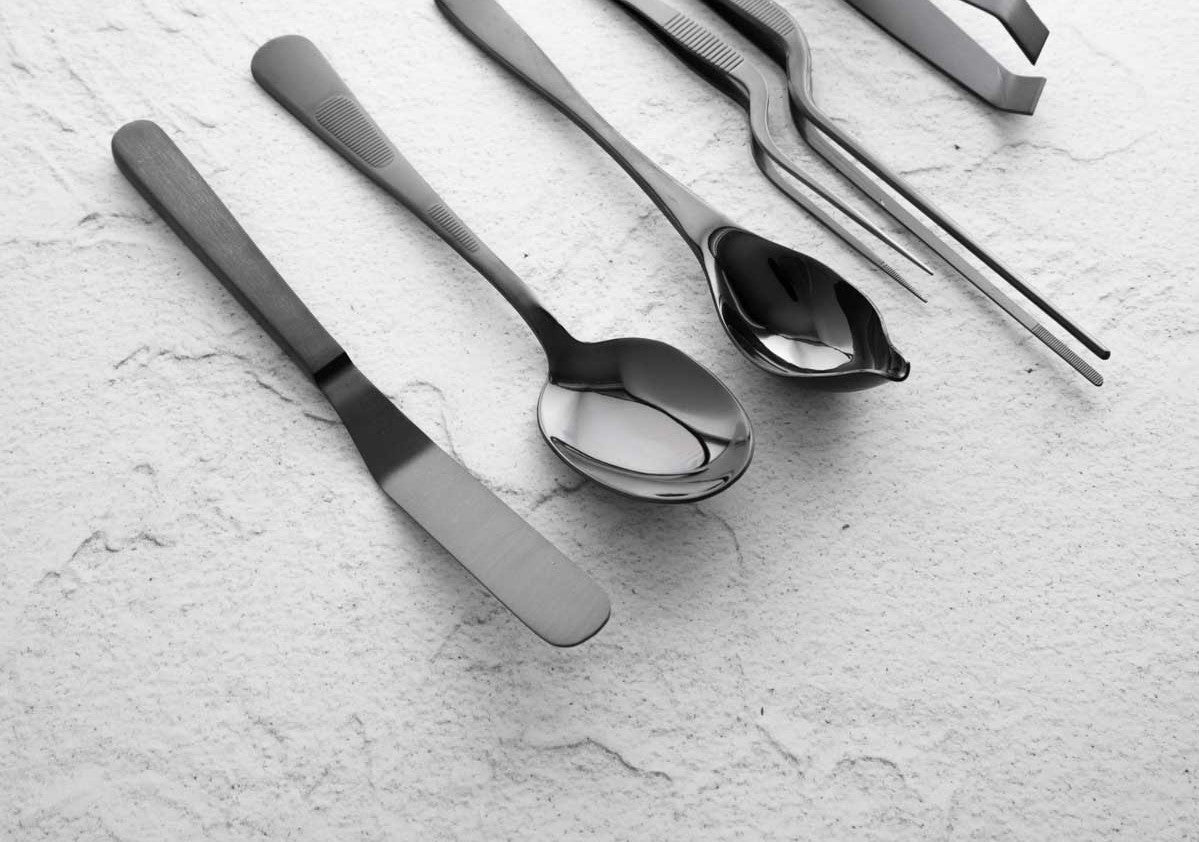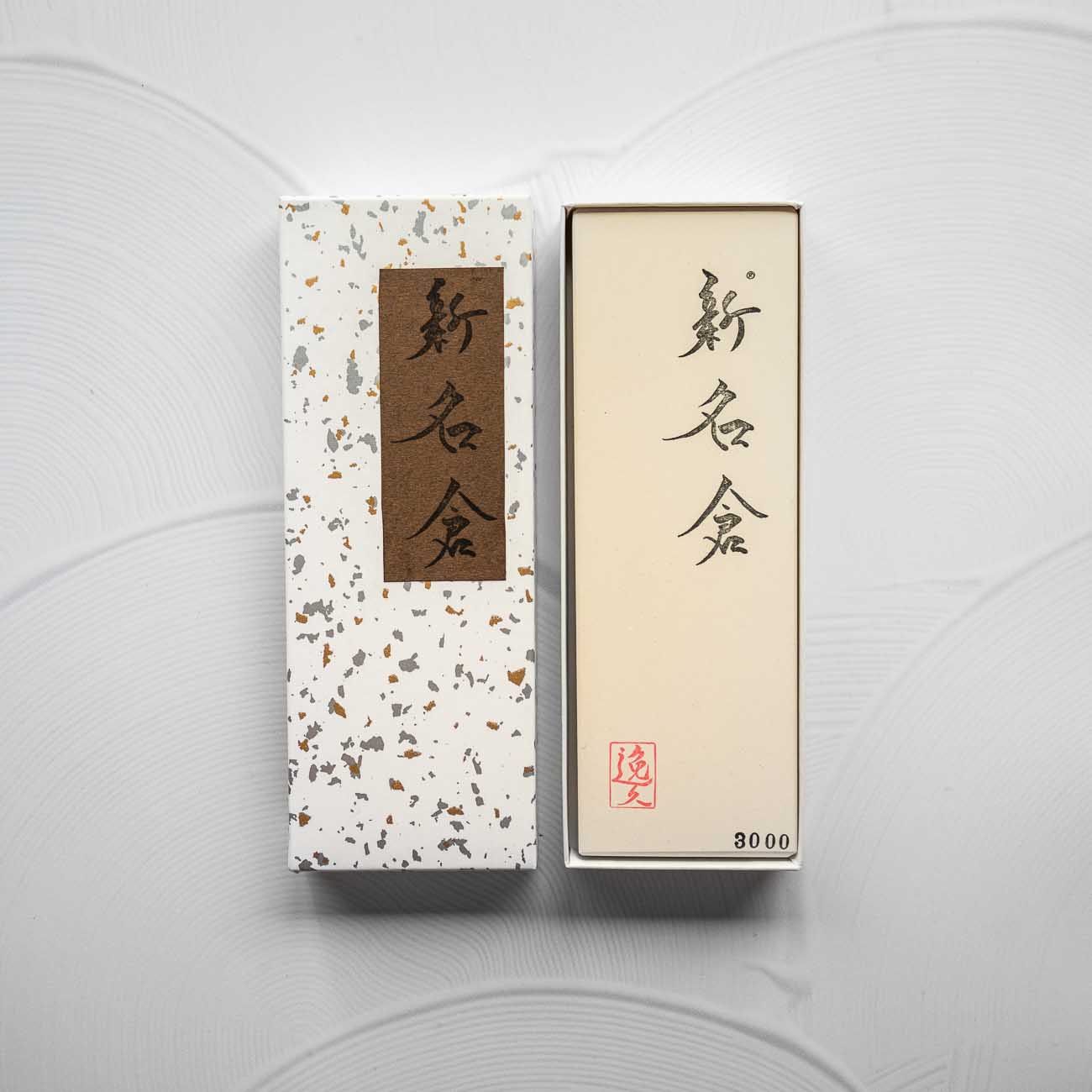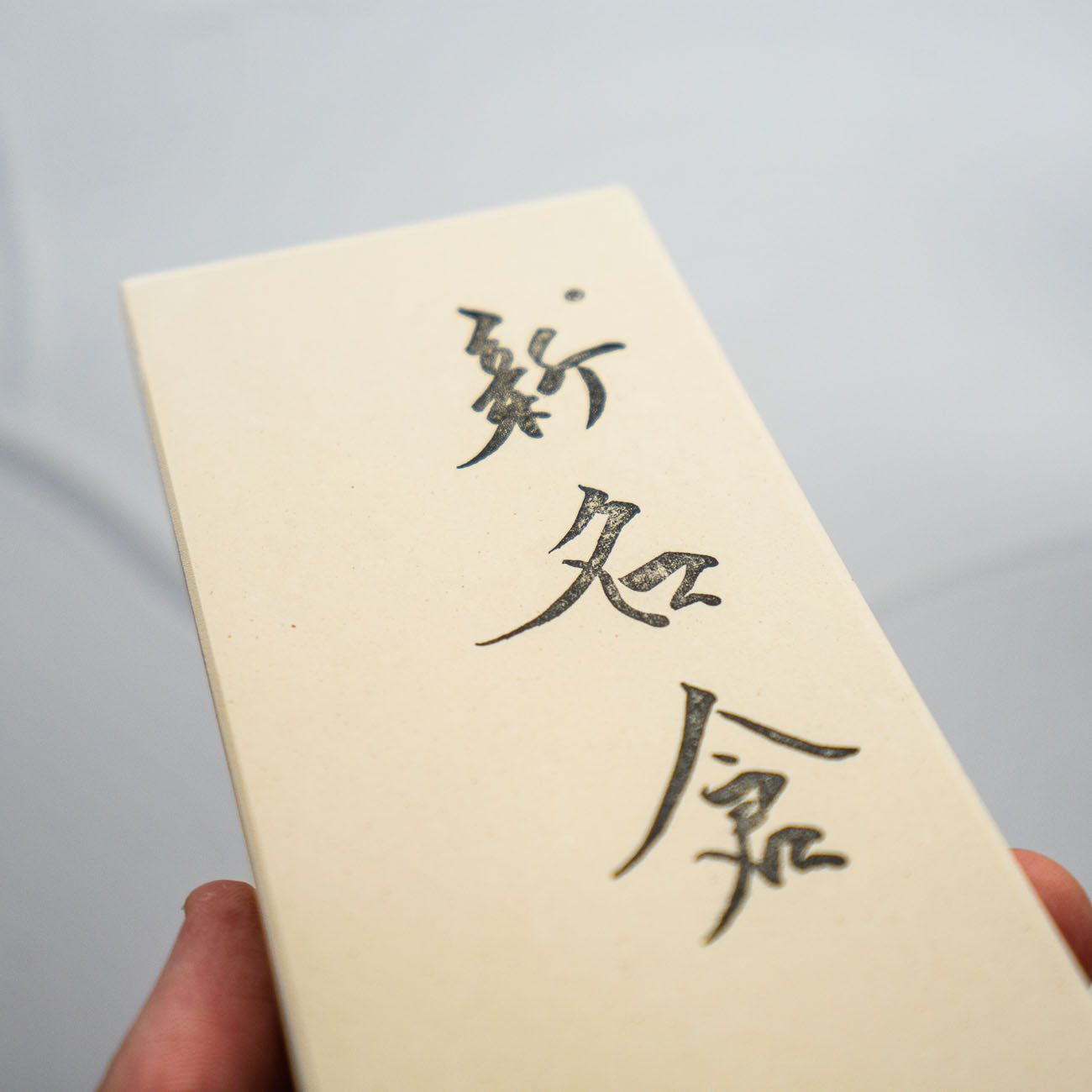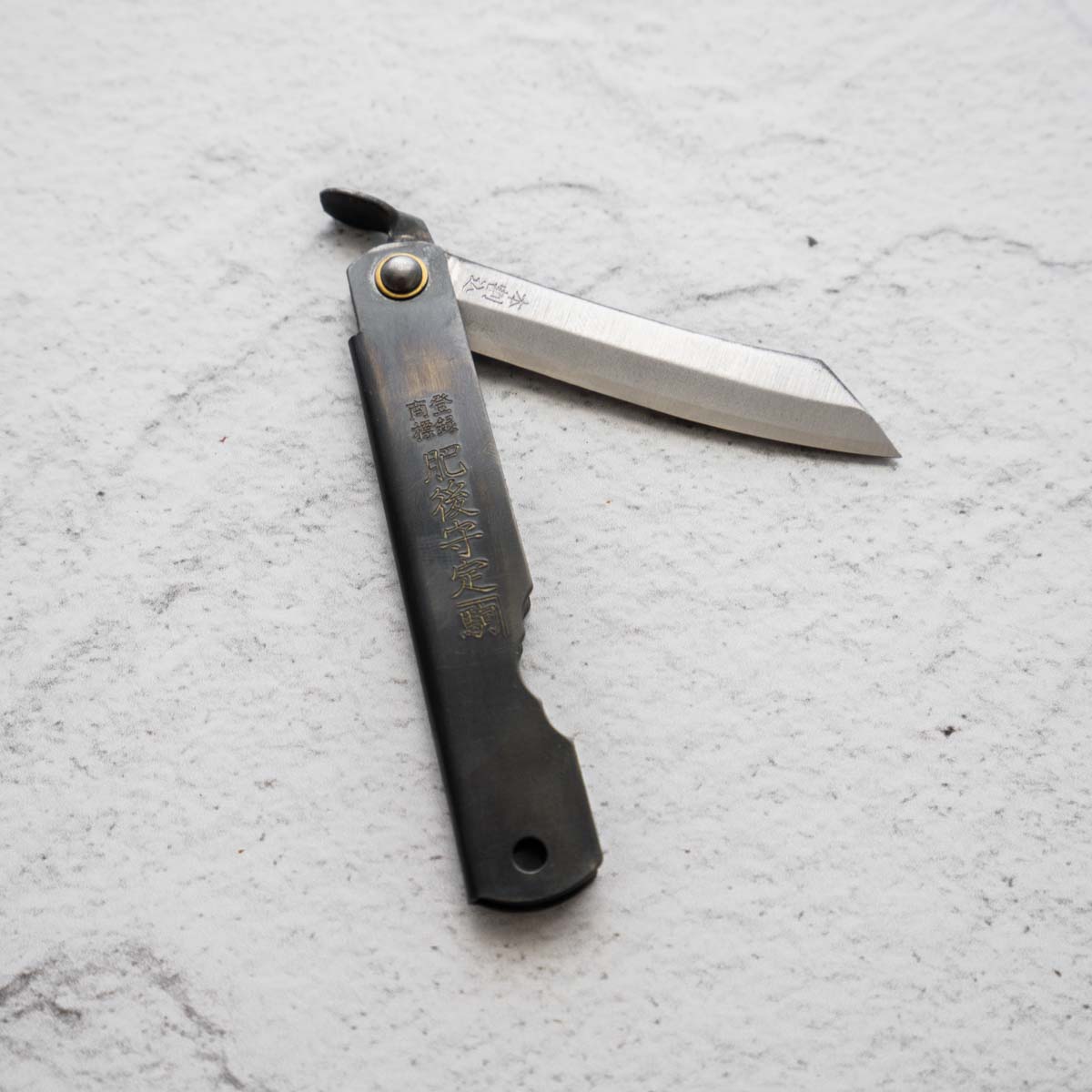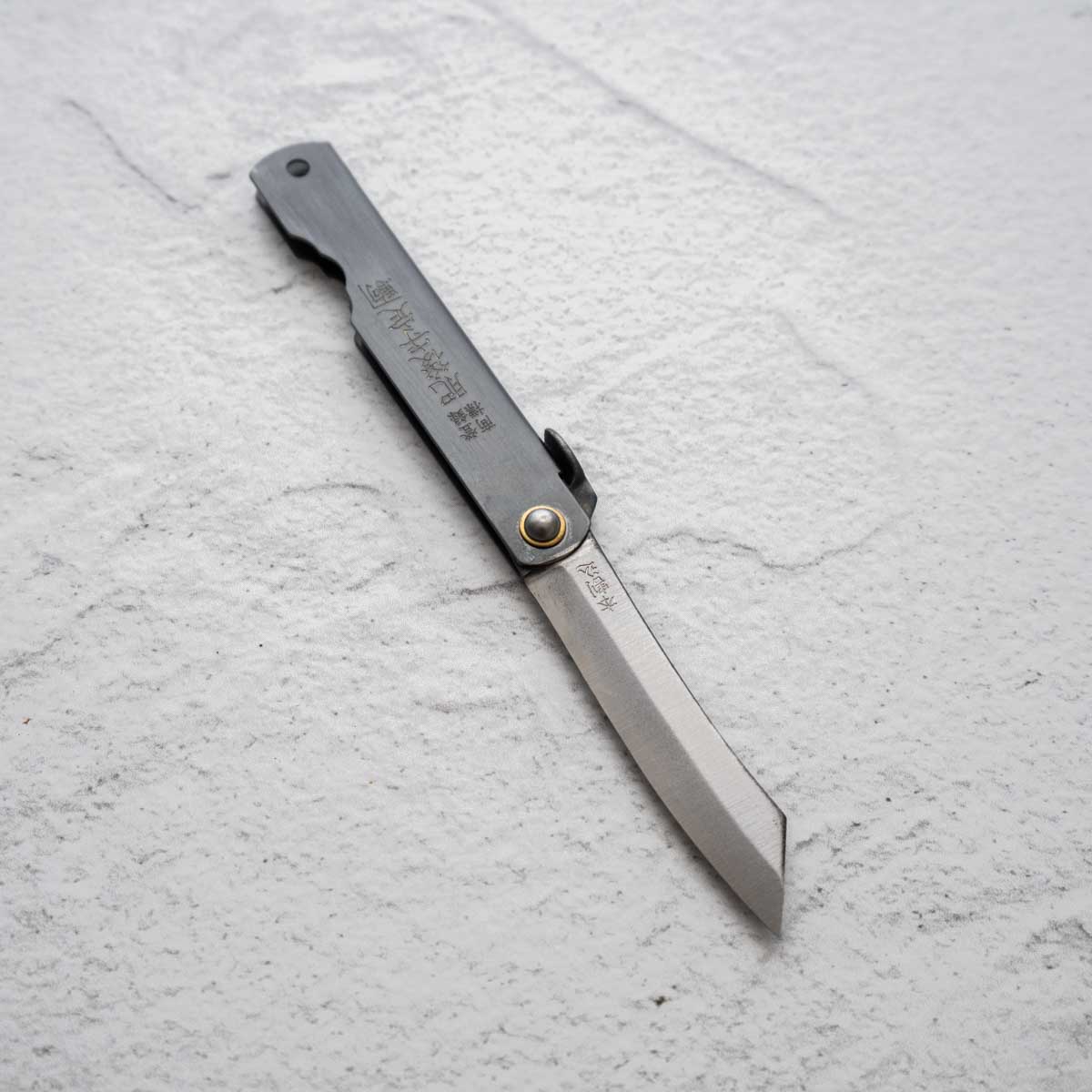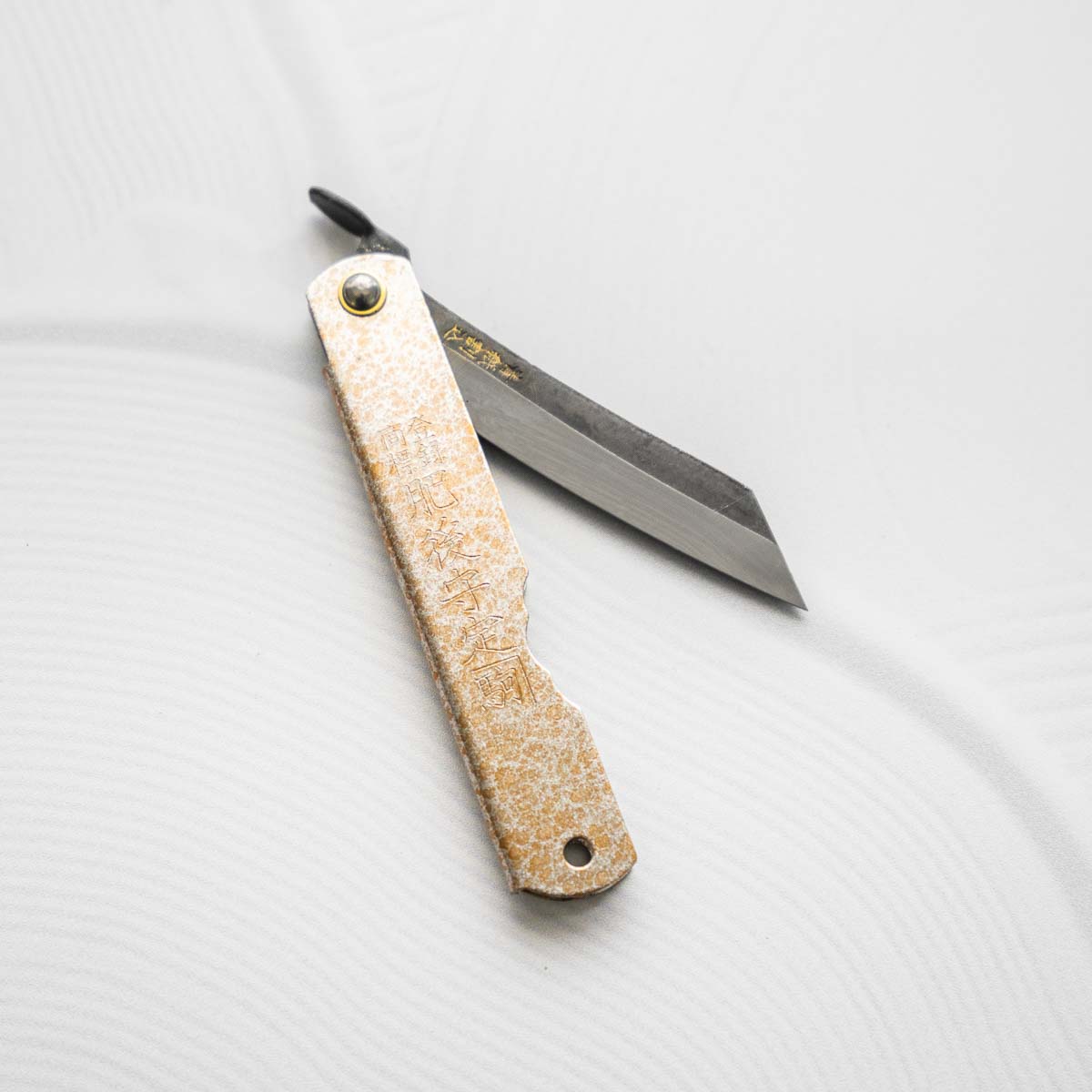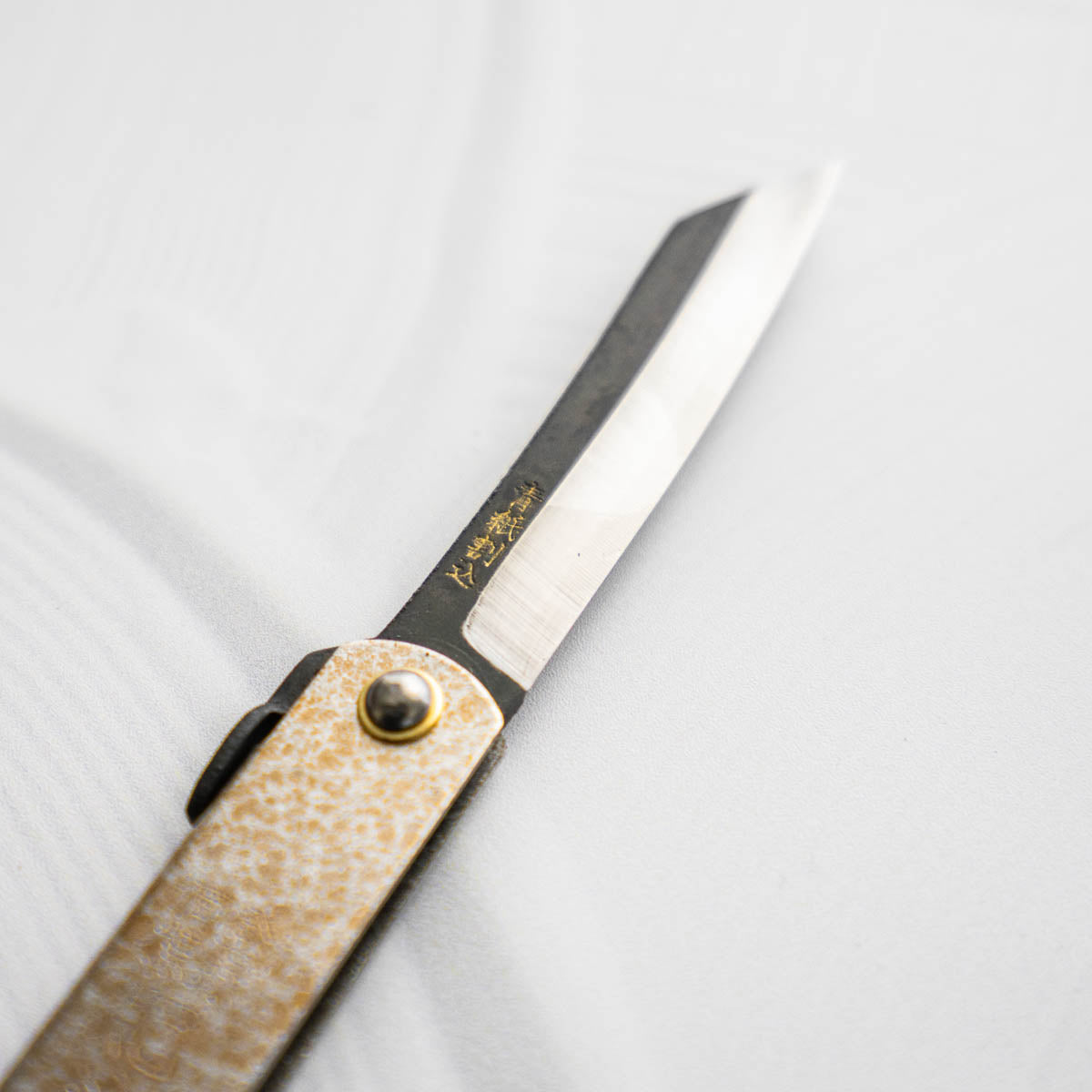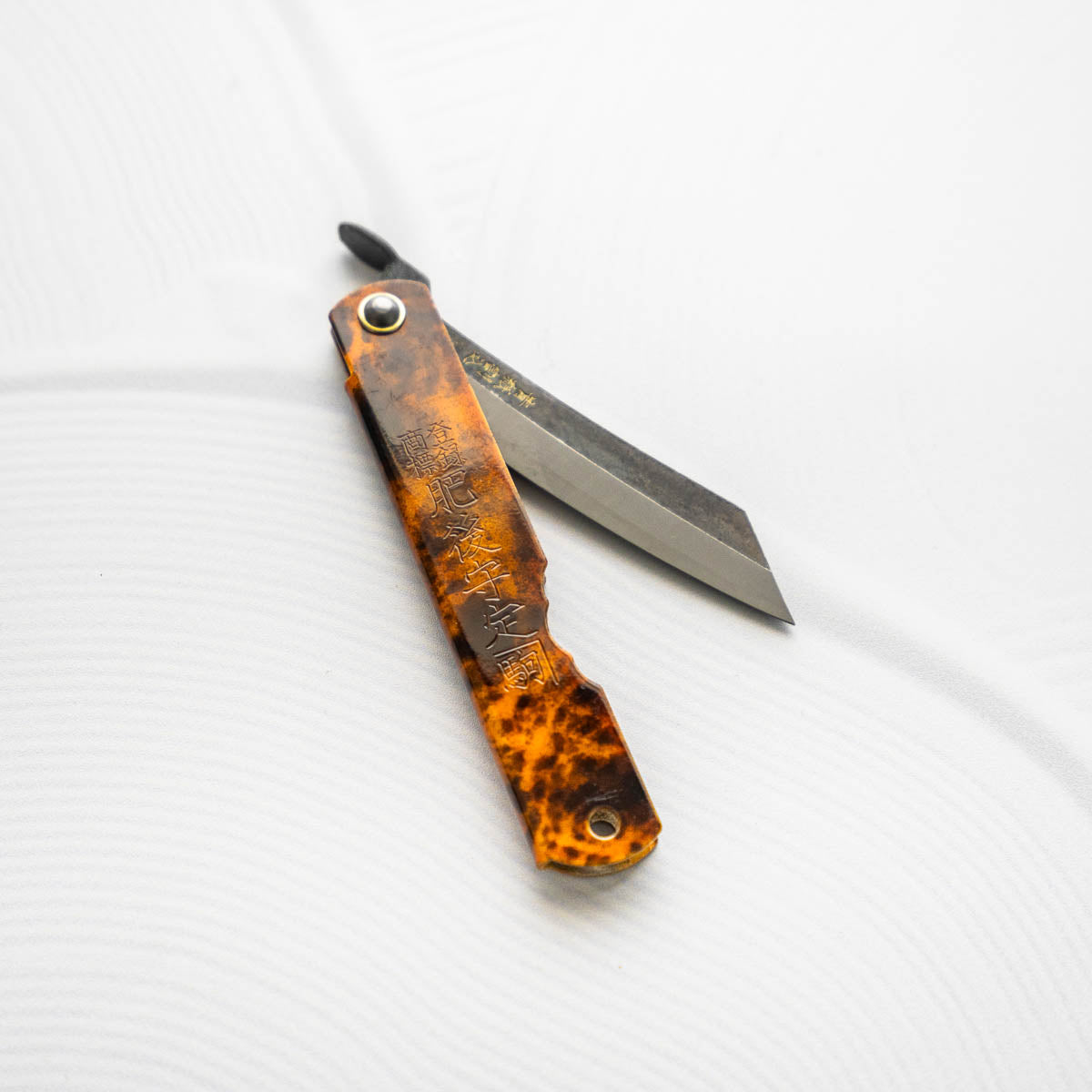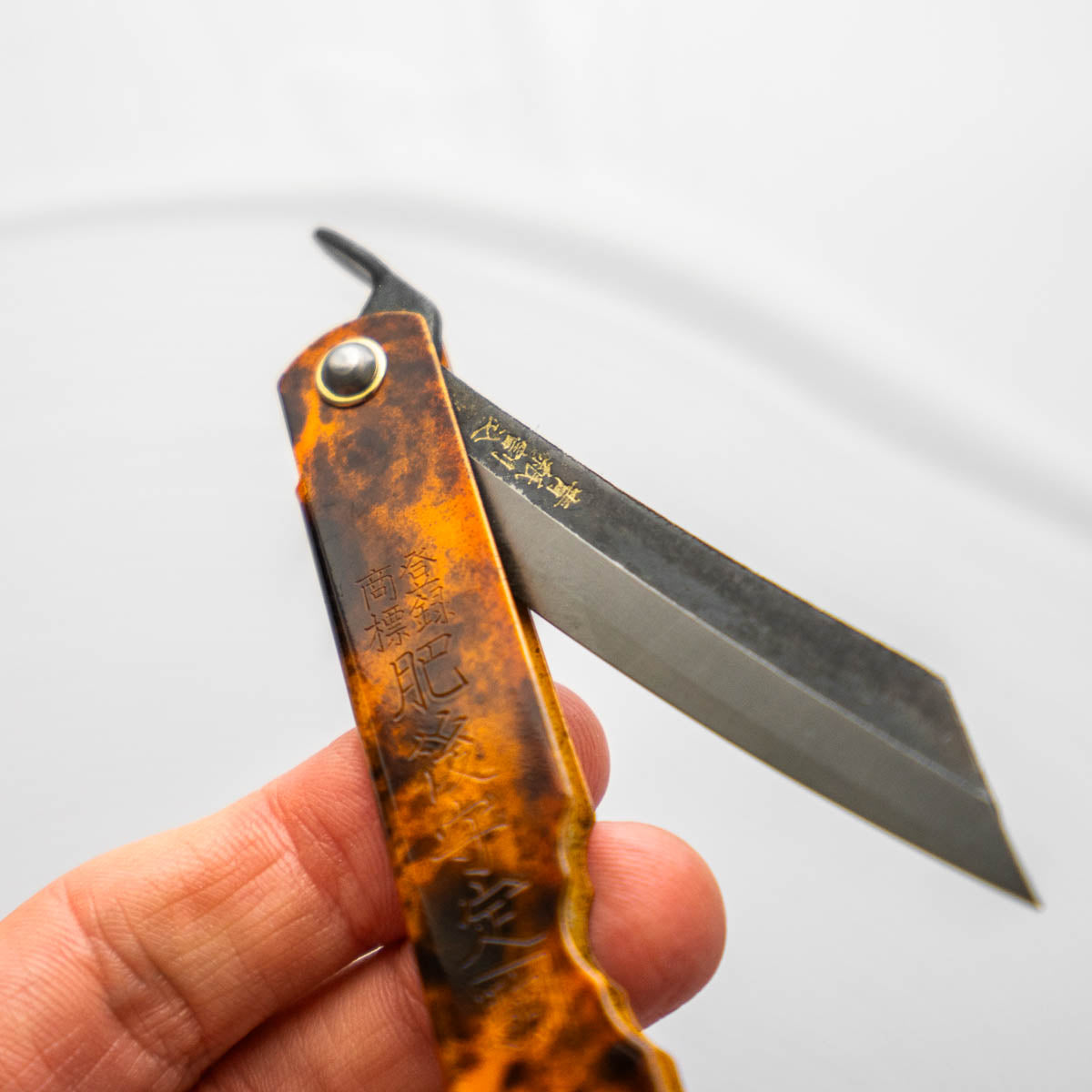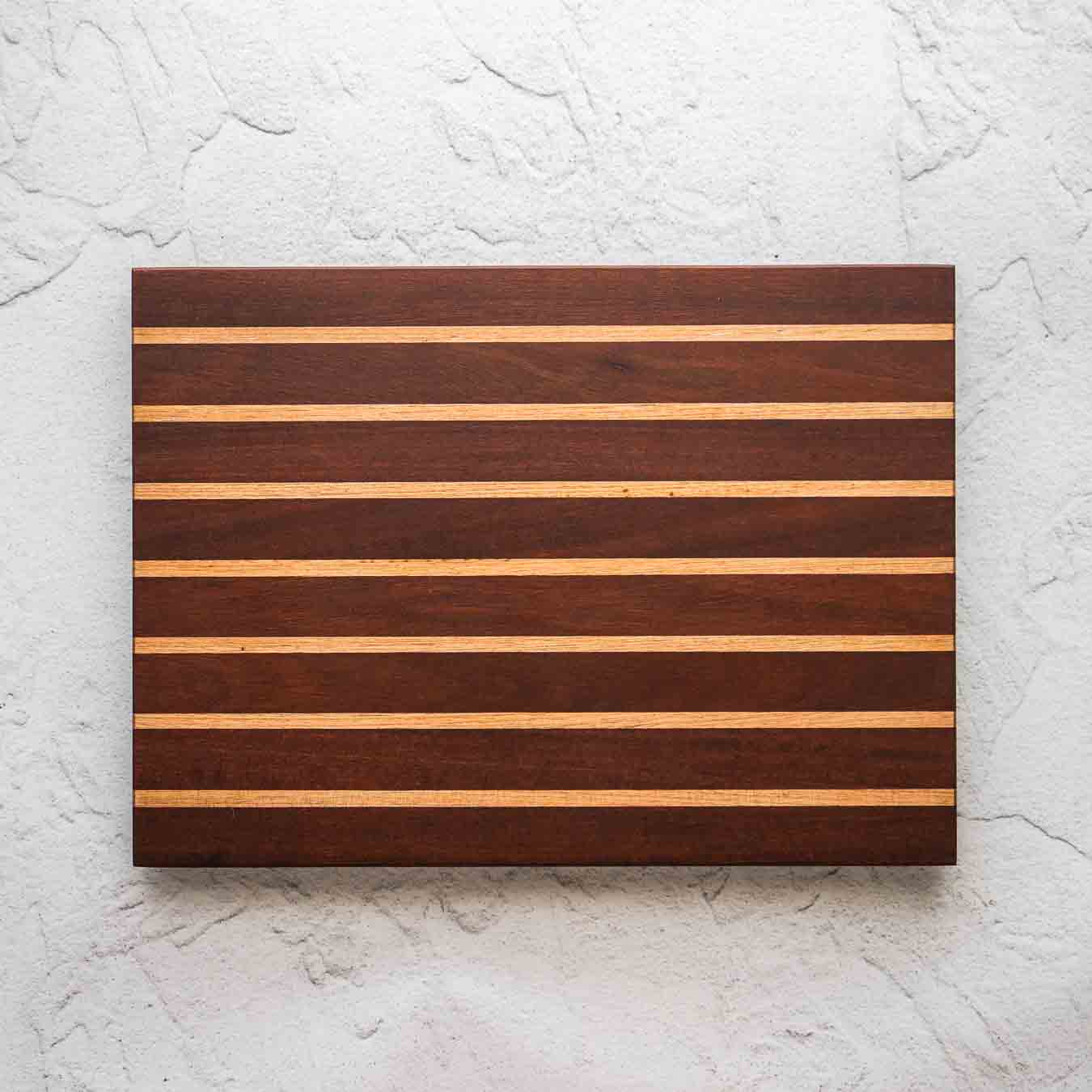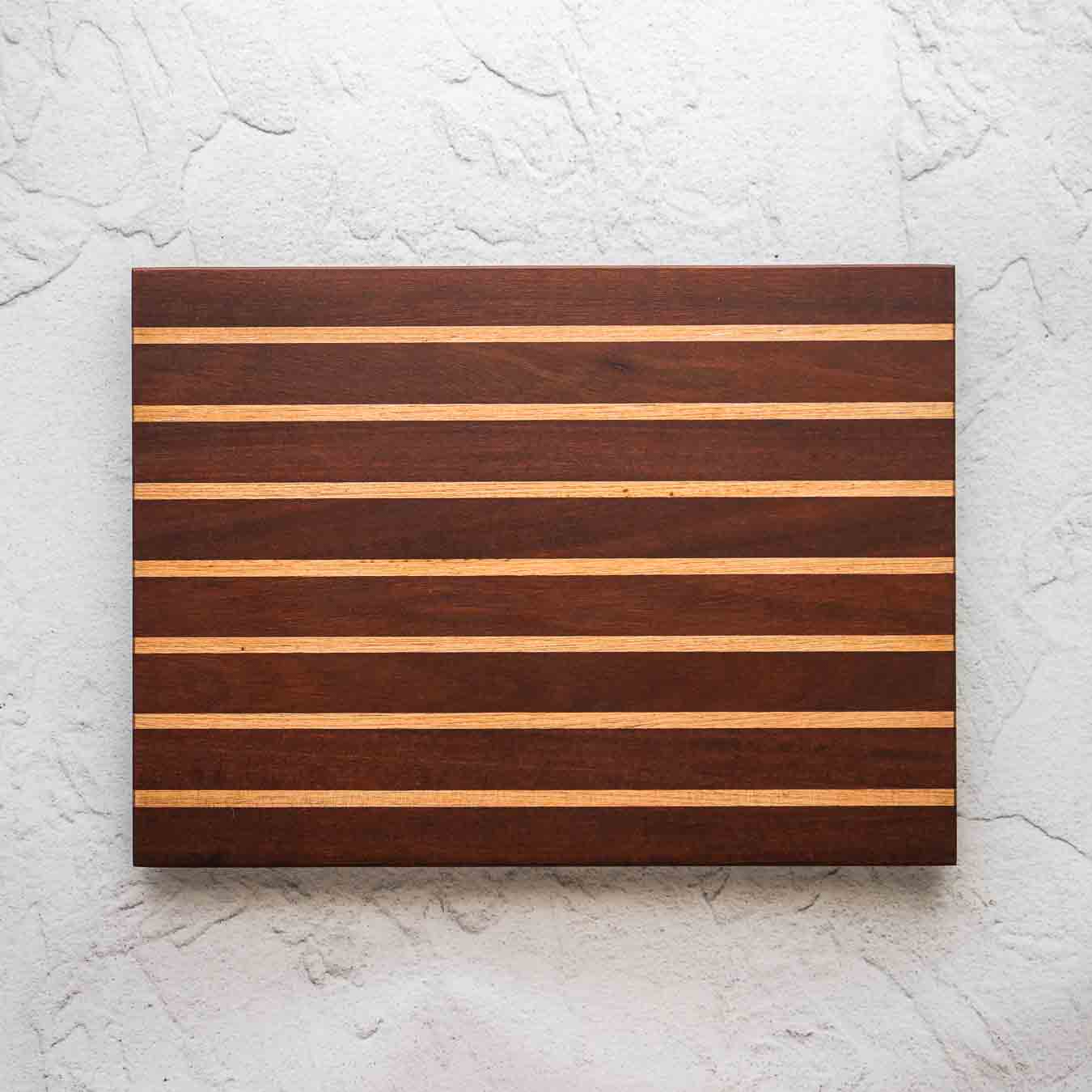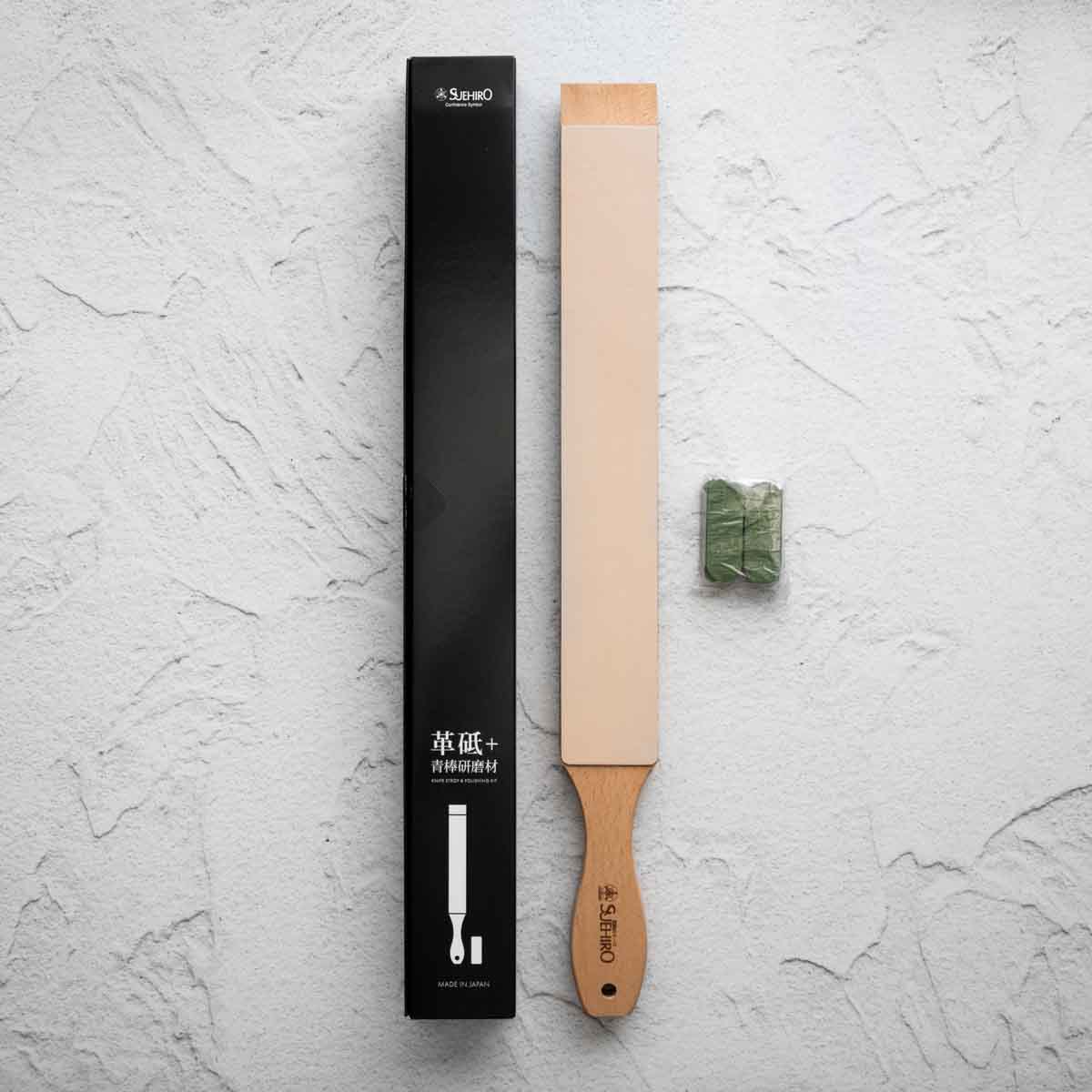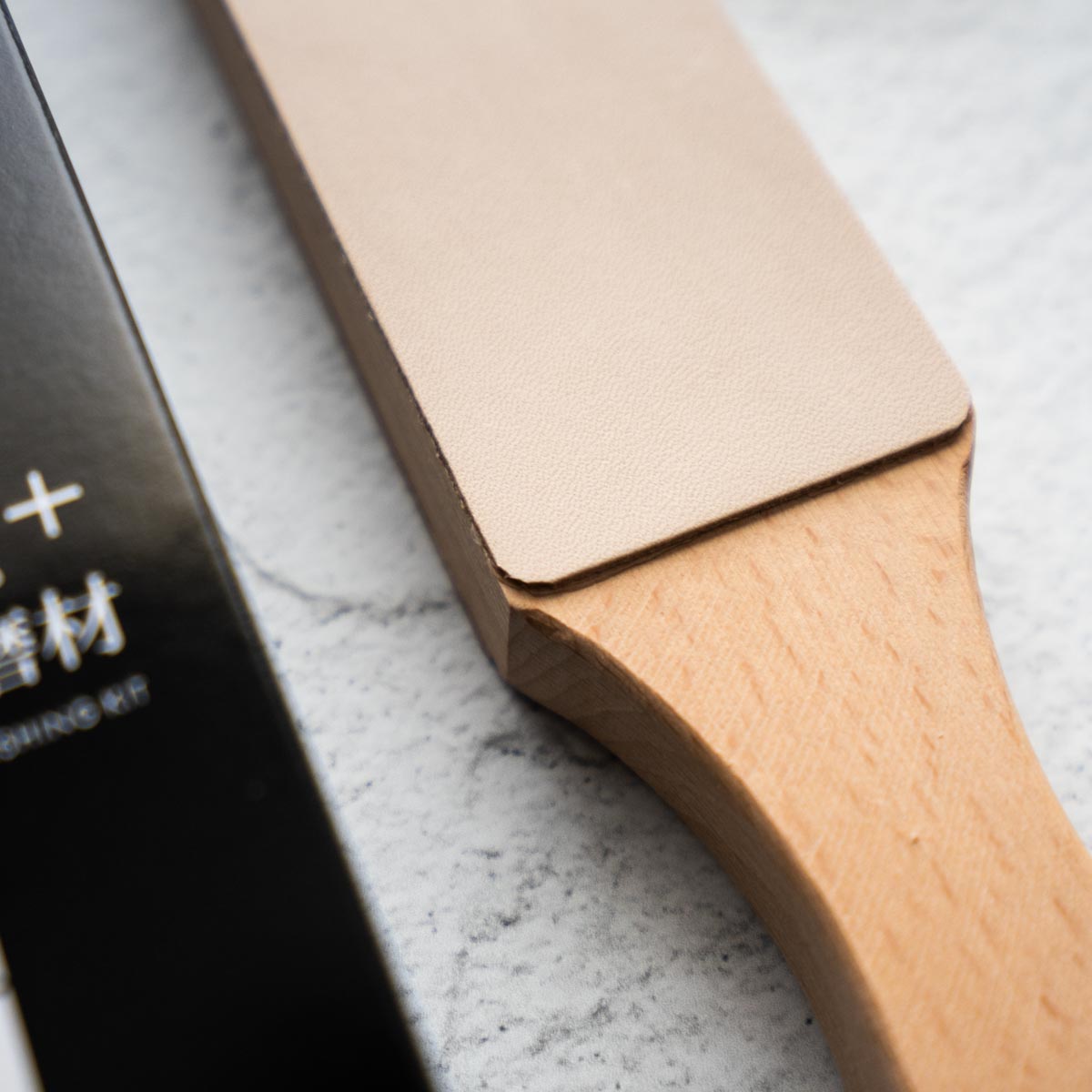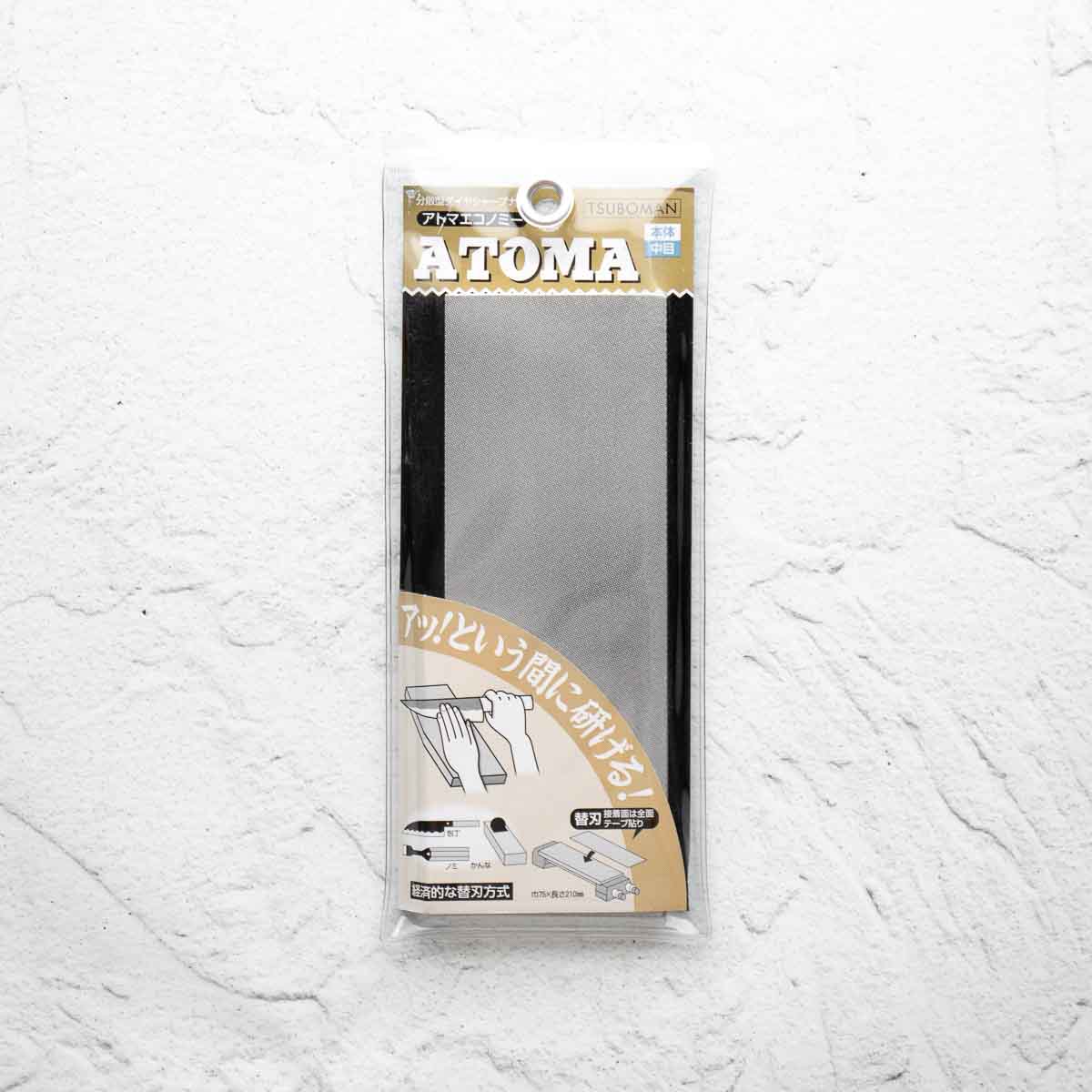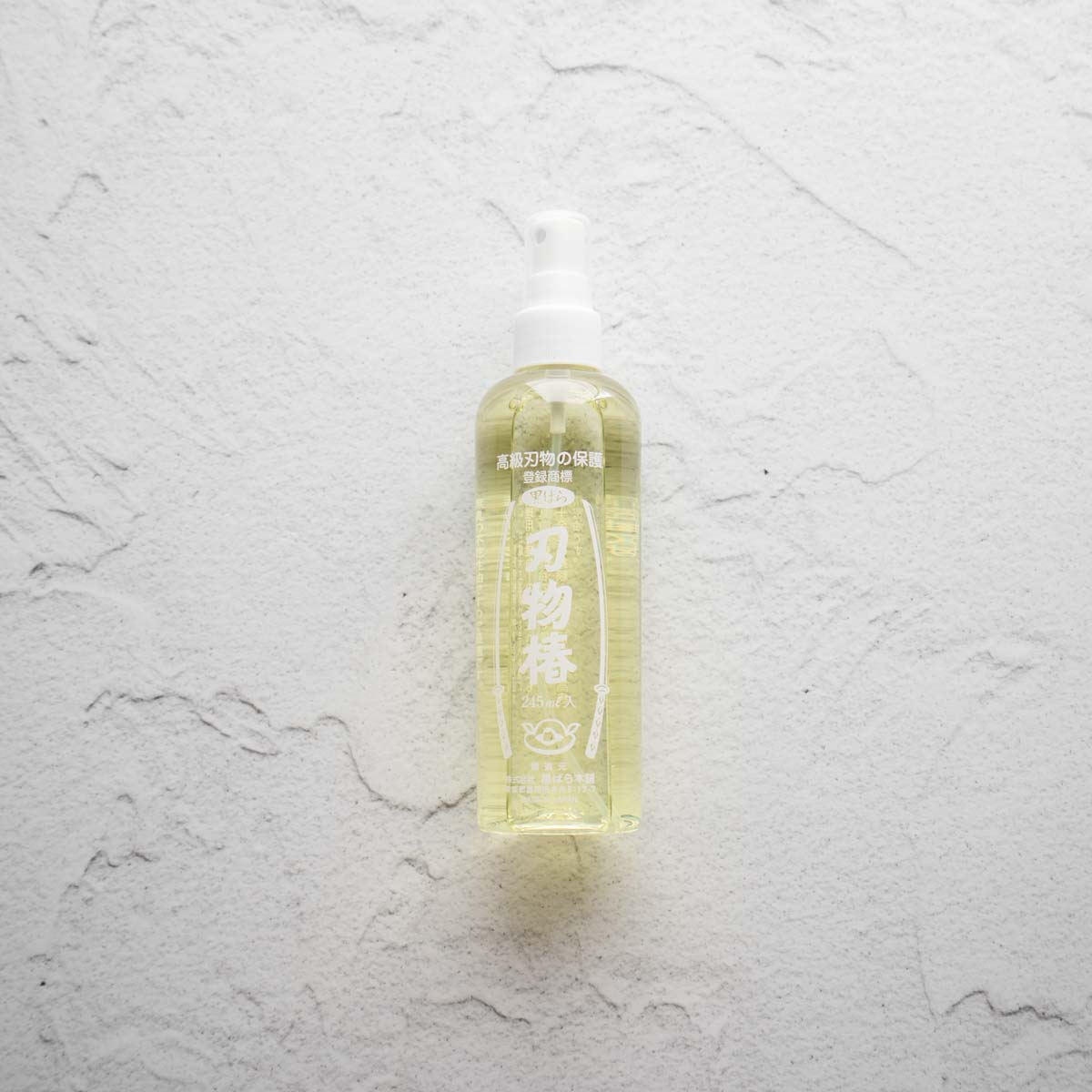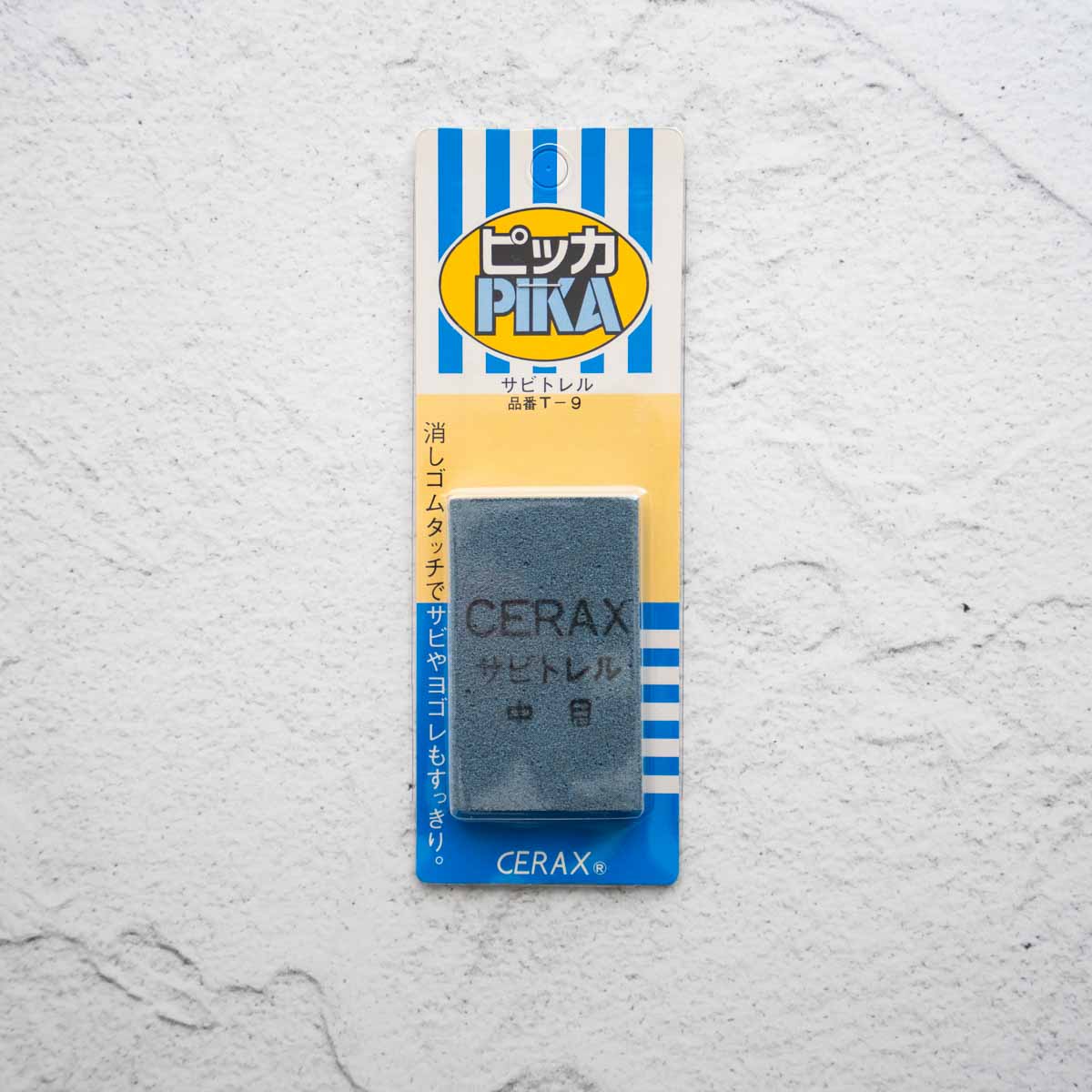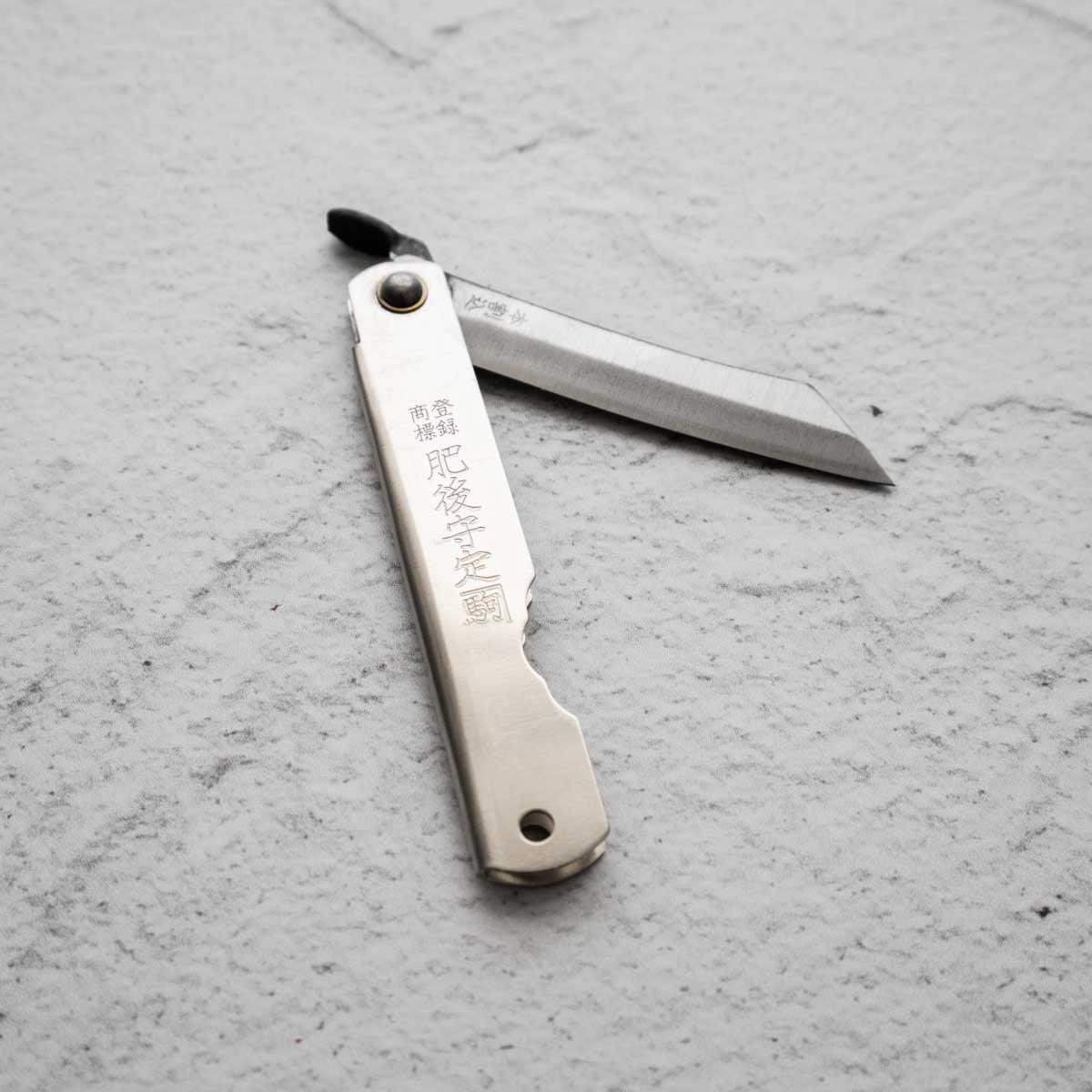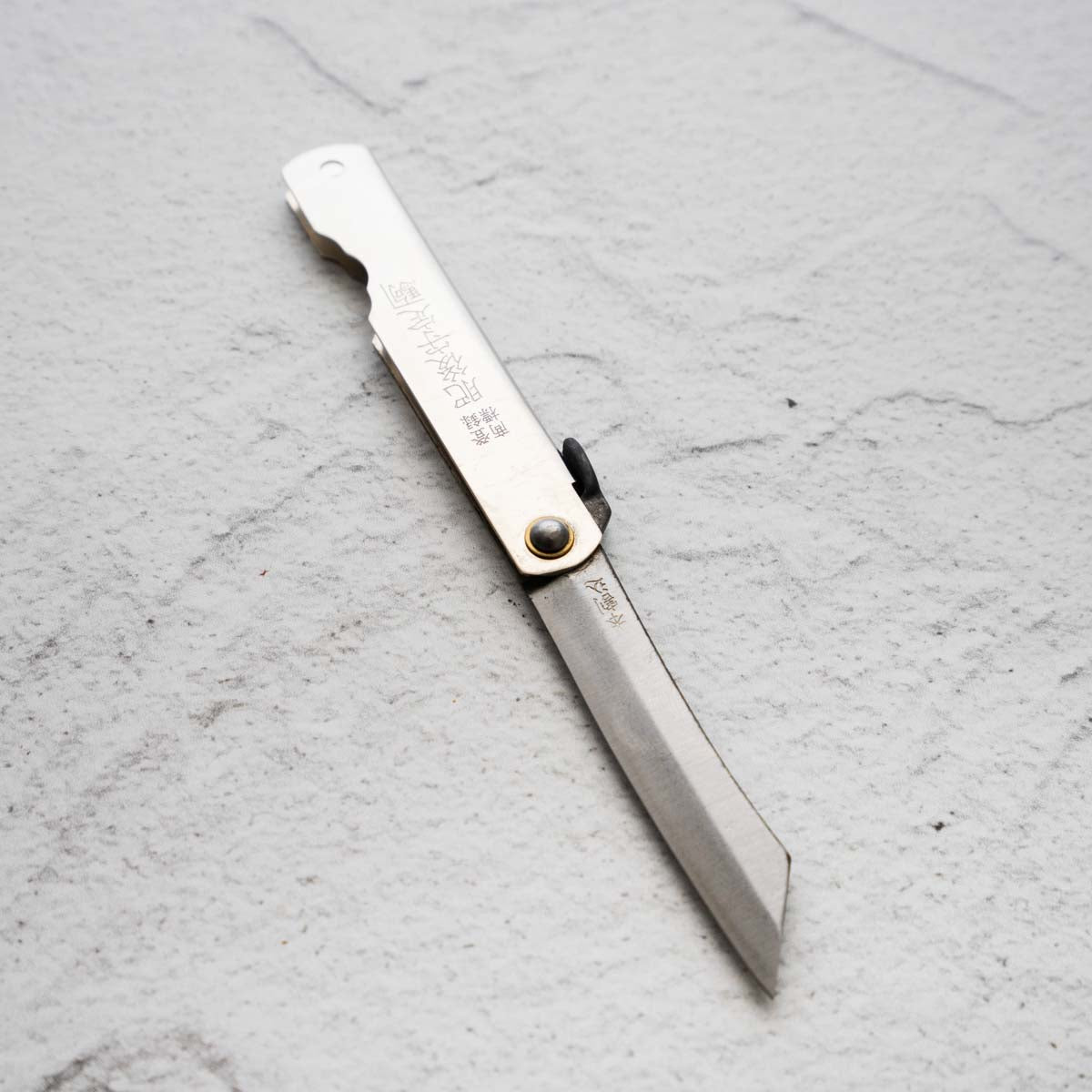254 products
Sort by:
254 products
254 products
Sort by:
Accessories Information
This synthetic/natural powder (Mikawa Nagura) blend is a perfect finisher for most stainless steels (AUS8/10, VG10, Ginsan etc) and provides a very toothy yet refined everyday edge for carbon knives. Designed to be used after the 1000 grit Ikyu Shin Nagura.
These are soaking stones on the softer side which are best used with a slurry, so use a lapping plate or Nagura stone.
Knife Information
1894- Mr. Tasaburo Shigematsu, a hardware wholesaler, introduced a new pocket knife with its blade and sheath folded by installing a small handle “Chikiri (tail)” on the blade, while inspired by the knife he brought back from Kagoshima.
He named it “Higonokami Knife” because many of his customers were in Kumamoto area (formally Higo country), which turned out to dramatically increase his sales. The blades have gradually changed their shapes. Unlike single-edged knives, the double-edged blades (V-shaped cross section) were in those days considered common. The earlier blades had a sharper tip (shape of a bamboo leaf), but now they have square shapes. The sheaths had a vertically folding style and a cross folding style, now the vertical one has to be custom made.
In 1911, at the First Kobe Export Articles Competitive Exhibition, Crown Prince (later Emperor Taisho) liked Higonokami on display very much and bought one, which is said to have helped its fame further spread.
The Higonikami is a fantastic traditional utility knife at a low cost.
Specifications
| Style: | Higonokami |
| Blade Length: | 65mm |
| Weight: | 33g |
| Bevel: | Double Bevel |
| Blade Material: | Laminated SK Carbon Steel |
| Handle Material: | Black Nickel |
Knife Information
1894- Mr. Tasaburo Shigematsu, a hardware wholesaler, introduced a new pocket knife with its blade and sheath folded by installing a small handle “Chikiri (tail)” on the blade, while inspired by the knife he brought back from Kagoshima.
He named it “Higonokami Knife” because many of his customers were in Kumamoto area (formally Higo country), which turned out to dramatically increase his sales. The blades have gradually changed their shapes. Unlike single-edged knives, the double-edged blades (V-shaped cross section) were in those days considered common. The earlier blades had a sharper tip (shape of a bamboo leaf), but now they have square shapes. The sheaths had a vertically folding style and a cross folding style, now the vertical one has to be custom made.
In 1911, at the First Kobe Export Articles Competitive Exhibition, Crown Prince (later Emperor Taisho) liked Higonokami on display very much and bought one, which is said to have helped its fame further spread.
The Higonikami is a fantastic traditional utility knife at a low cost.
Specifications
| Style: | Higonokami |
| Blade Length: | 70mm |
| Weight: | 43g |
| Bevel: | Double Bevel |
| Blade Material: |
Aogami 2 |
| Handle Material: | Stainless Steel |
Knife Information
1894- Mr. Tasaburo Shigematsu, a hardware wholesaler, introduced a new pocket knife with its blade and sheath folded by installing a small handle “Chikiri (tail)” on the blade, while inspired by the knife he brought back from Kagoshima.
He named it “Higonokami Knife” because many of his customers were in Kumamoto area (formally Higo country), which turned out to dramatically increase his sales. The blades have gradually changed their shapes. Unlike single-edged knives, the double-edged blades (V-shaped cross section) were in those days considered common. The earlier blades had a sharper tip (shape of a bamboo leaf), but now they have square shapes. The sheaths had a vertically folding style and a cross folding style, now the vertical one has to be custom made.
In 1911, at the First Kobe Export Articles Competitive Exhibition, Crown Prince (later Emperor Taisho) liked Higonokami on display very much and bought one, which is said to have helped its fame further spread.
The Higonikami is a fantastic traditional utility knife at a low cost.
Specifications
| Style: | Higonokami |
| Blade Length: | 70mm |
| Weight: | 45g |
| Bevel: | Double Bevel |
| Blade Material: |
Aogami 2 |
| Handle Material: | Stainless Steel |
*Ships to Australian Customers Only*
- Crafted in Perth, Australia from locally sourced Jarrah
- Chamfered Edges
- Heavy & sturdy feel
- L 40cm x W 29cm x 26mm H
- Weight: 2.4kg
*Important Care Instructions*
These boards must be washed and wiped completely dry shortly after use. Avoid leaving these boards wet for extended periods. Proper timber care and maintenance (oiling/waxing) should be carried out.
*Ships to Australian Customers Only*
- Crafted in Perth, Australia from locally sourced Jarrah
- Chamfered Edges
- Heavy & sturdy feel
- L 50cm x W 40cm x 28mm H
- Weight: 4.32kg
*Important Care Instructions*
These boards must be washed and wiped completely dry shortly after use. Avoid leaving these boards wet for extended periods. Proper timber care and maintenance (oiling/waxing) should be carried out.
Accessory Information
The Atoma Diamond Lapping Plates by Tsuboman Japan are widely recognised as the superior solution for flattening your whetstones. Strong, sturdy, and weighing in at 600g, these will make light work of even the hardest stones.
– Semicourse 400 Grit for fast removal of stone surface
– Replaceable abrasive sheet
- 7.5cm x 21cm plate size
Knife Information
1894- Mr. Tasaburo Shigematsu, a hardware wholesaler, introduced a new pocket knife with its blade and sheath folded by installing a small handle “Chikiri (tail)” on the blade, while inspired by the knife he brought back from Kagoshima.
He named it “Higonokami Knife” because many of his customers were in Kumamoto area (formally Higo country), which turned out to dramatically increase his sales. The blades have gradually changed their shapes. Unlike single-edged knives, the double-edged blades (V-shaped cross section) were in those days considered common. The earlier blades had a sharper tip (shape of a bamboo leaf), but now they have square shapes. The sheaths had a vertically folding style and a cross folding style, now the vertical one has to be custom made.
In 1911, at the First Kobe Export Articles Competitive Exhibition, Crown Prince (later Emperor Taisho) liked Higonokami on display very much and bought one, which is said to have helped its fame further spread.
The Higonikami is a fantastic traditional utility knife at a low cost.
Specifications
| Style: | Higonokami |
| Blade Length: | 65mm |
| Weight: | 33g |
| Bevel: | Double Bevel |
| Blade Material: | Laminated SK Carbon Steel |
| Handle Material: | Semi-Polished Steel |
When it comes to sharpening, stability makes all the difference. You could wrestle with a stone that moves around on you, or you could use this tool to keep it secure, making the process safer and more enjoyable.
This sink bridge takes sharpening setups to the next level. It offers an easy way to access water while keeping cleanup simple. With adjustable grips to fit nearly any sink and hold stones of all sizes, it’s a versatile and reliable solution for any sharpening task.
Show
per page

